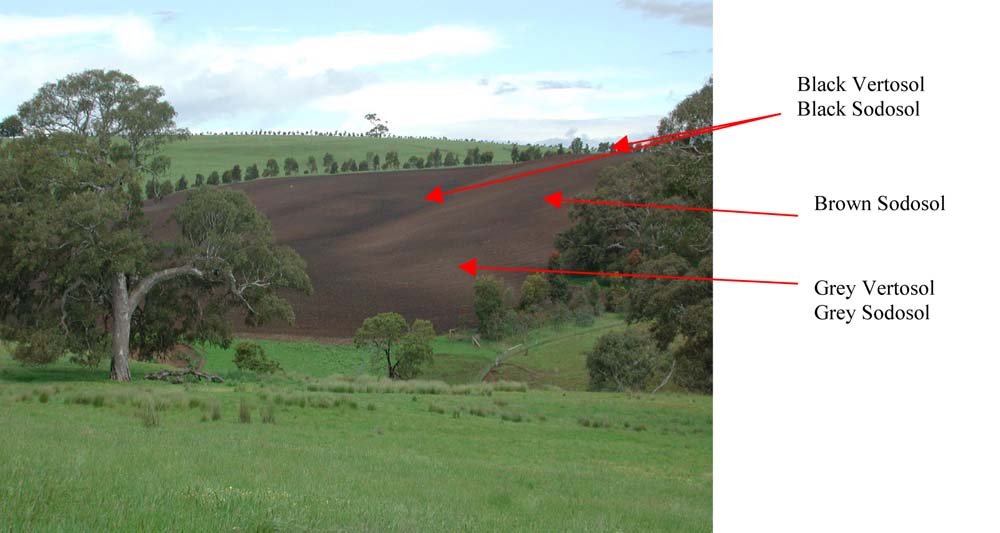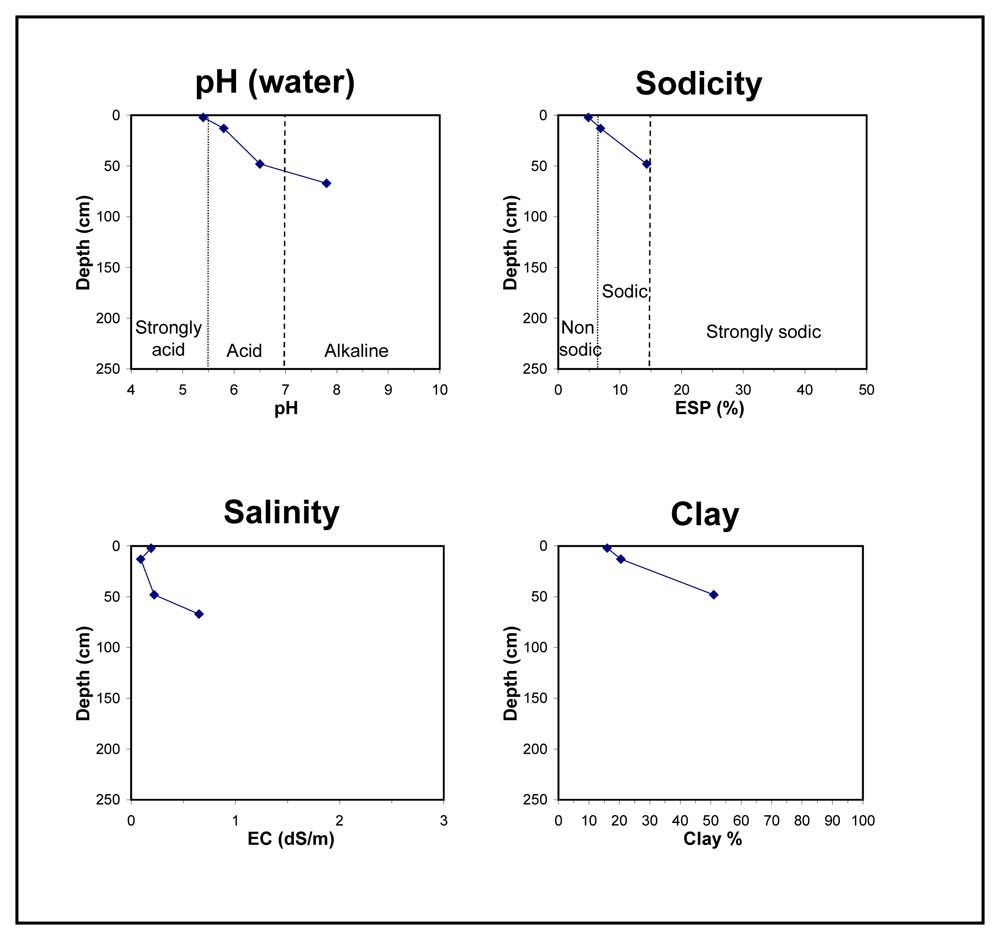GL12
| Site: GL12 | Land Unit: Merino Tablelands |
| Aust. Soil Class.: Vertic, Subnatric, Brown SODOSOL (confidence level 1) |
 |
|
Site Description:
| Slope: 12% | Geology: Cretaceous non-marine sandstone |
| Landform pattern: Rolling low hills and rises | Position in landscape: Lower slope |
| Internal drainage: Imperfectly drained |
Soil Profile Morphology
| A1 | 0-5 cm | Very dark greyish brown (10YR3/2) sandy loam, weak subangular blocky structure (5-10 mm), weak consistence when dry, pH 5.4; transition to: |
| A2 | 5-35 cm | Dark brownish grey (10YR4/2) fine sandy clay loam, massive structure, very firm consistence when dry, very few ferruginised nodules, pH 5.8; transition to: |
| Subsoil | ||
| B2 | 35-70 cm | Dark brown (10YR3/3), medium clay, very few faint yellow mottles from oxidised roots, strong lenticular structure, very strong consistence when dry, pH 6.5; transition to: |
| B3 | 70-90 cm | Dark brown (10YR3/3), light clay, very strong consistence when dry, organic staining segregations, pH 7.8. |
Key profile features:
- Acidic topsoil
- Sodic subsoil
- Top of the subsoil dispersive when worked when wet



